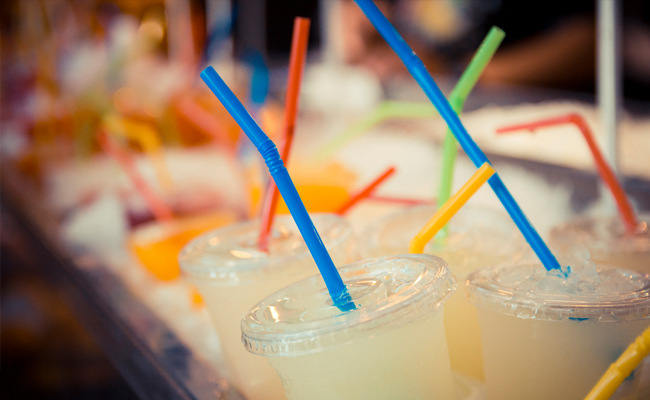Environmental sustainability may not be the first thing that comes to mind when one thinks of bars and nightly waste streams of cans and bottles. But a newfound focus on the sourcing and quality of ingredients has coincided with a growing awareness and concern around our collective environmental impact, spurring a sustainable revolution in the cocktail industry. Here at Tales we are trying to do our part as well — in 2015 we partnered with 360 Vodka to send over 5,000 lbs of compost to Hollygrove Farm and recycled over 200,000 tasting cups. This year at Tales of the Cocktail 2016, we have also given out a first-time award, the Sustainable Spirit, for individuals in the industry-leading the sustainability charge in their own bars and encouraging others to follow their lead (you can learn more about the winners and their efforts here).
As part of our efforts around sustainability, we surveyed over 2,000 bartenders, industry professionals and cocktail enthusiasts regarding environmental sustainability and released a white paper highlighting their responses and current research. The paper highlights the progress that has been made, the challenges facing entrepreneurs looking to be more sustainable, and pinpoints a few ways that bar owners can reduce their environmental footprint. Below are five key takeaways from our research:
1. Local is trendy, but it doesn’t always mean sustainable.
In our survey of 1,200+ bartenders and industry professionals, the second most commonly reported activity was using locally sourced ingredients (65.1%), coming in a close second behind recycling (68%). The fact that local ingredients are being used at a rate almost double that of organic products (35%) reflects a national trend around customer preferences as well as the loose definition of local compared to organic. Unlike organic products, the jury is still out on whether “local” is always synonymous with environmentally friendly, given that transportation is only one component of a product’s environmental footprint. However, the meteoric rise of local foods and drinks is an encouraging sign that consumers are concerned about the origin of the products they are buying and can significantly impact industry offerings.
 Data provided by trepwise.
Data provided by trepwise.
2. Awareness and prioritization of sustainability varies geographically.
When it comes to sustainability, not all areas place equal emphasis on reducing environmental impact. In response to a question posed exclusively to bartenders and bar owners — “environmental concerns (energy efficiency, sustainability waste reduction) are a priority in my place of work”— 60% of respondents agreed or strongly agreed. However, there was significant variation in response based on geographic location. When broken down by U.S. census sub-regions, the sub-region with the highest positive response rate (72.3%) was New England. Contrastingly, West South Central region, comprised of Texas, Louisiana, Oklahoma and Arkansas, had the lowest rate (46.1%).
When broken down by metropolitan area, additional trends emerge. At the very top of the list was Vancouver, Canada, followed by Jacksonville, Florida and Portland, Oregon. Among cities with the lowest prioritization score, Baton Rogue and New Orleans were both within the top five, a disappointing finish for Louisiana. The presence of two Canadian cities at the top of the list is not surprising. The United States lags behind other countries when it comes to general awareness and brands incorporating sustainability into their messaging. A global study by Havas Media in 2009 found that 89% of Chinese consumers hear the term “sustainability” often, a sharp contrast to the U.S., where that number is only 21%.
Cities with Highest Prioritization
- Vancouver, Canada
- Jacksonville, FL
- Portland, OR
- Boston, MA
- San Francisco, CA
- Denver, CO
- Toronto, Canada
- Austin, TX
- Atlanta, GA
- Tampa, FL
- Washington, DC
Cities with Lowest Prioritization *
- Baton Rouge, LA
- Mexico City, Mexico
- Philadelphia, PA
- Phoenix, AZ
- New Orleans, LA
- Nashville, TN
- Las Vegas, NV
- San Antonio, TX
- New York, NY
- St. Louis, MO
3. The majority of emissions come from throughout the supply chain, not just from bars.
Given the length and size of the supply chains for the many ingredients behind a well-stocked bar, there are a number of areas in which environmental impact can be reduced. In fact, the most energy intensive parts of the supply chain happen long before bartenders and consumers ever handle a physical product. According to a study by the Beverage Industry Environmental Roundtable, the most energy-intensive part of the life cycle of a bottle of spirits is actually distillation, which can contribute between 36-40% of its footprint. A study by the American Association of Wine Economists found that a majority of wine’s carbon footprint comes from shipping. While these activities happen higher up in the chain, those in charge of procurement for bars have the power to source their products from companies that have more environmentally responsible practices. However, to create enough incentive to re-engineer a supply chain will require a significant increase in consumer education and involvement — customers must validate the business case for environmental products by voting for sustainable brands with their wallets.
4. Consumers are willing to pay for sustainability, but mostly when they can taste it.
Bar owners with an interest in sustainability have the unique advantage of selling a product where you can taste difference in quality. As in the case of the restaurant industry, the direct relationship from product sourcing and production to the experience of the consumer makes passing on the costs of sustainability to the customer more feasible. The Tales of the Cocktail survey results supported this hypothesis: respondents overwhelmingly agreed that freshness and sourcing of ingredients is a top concern when deciding what bars they frequent (88% Agreed). Sustainability did not have the same universal draw— customers were more divided on whether sustainability was a factor in their decision around where to drink and dine. (47% Agreed). Therefore, to effectively market sustainability bar owners must either tie it to quality and freshness, which consumers are willing to pay for, or implement changes that are also tied to cost savings around reducing energy consumption or waste.
5. Establishments are beginning to adopt sustainability into their brands and market it.
Some bar owners have made sustainability and waste reduction a major selling point and part of their brand. Jennifer Colliau, Bar Director at The Perennial (a San Francisco restaurant and bar that champions “progressive farming”) designed the entire customer experience, from the bar infrastructure to the menu and sourcing all with an eye towards sustainability. Across the Atlantic, Ryan Chetiyawardana markets his signature London-based bar, White Lyan, as the first bar in the world with no perishables, with a waste stream he estimates to be 70% less than traditional bars. Both have gained widespread recognition for their innovations around sustainability, and Ryan won “International Bartender of the Year” at Tales of the Cocktail 2015.
So, what can you do?
Check out the white paper to learn about ways in which bar owners and managers can become more sustainable, everything from switching to a flat rack and narrow glassware, to reducing sink’s water flow, to incorporating sustainable measurements and thinking about cocktails in terms of mL and KWh. You can also find some simple steps for greener bar design here. As a consumer, you can vote with your wallet and support sustainable brands. The United States lags behind the rest of the world in terms of awareness around environmental sustainability. To build an economy, and society, that is structured for the future will require entrepreneurs, business owners, and consumers to prioritize sustainability and reverse that trend. The budding sustainable alcoholic beverage industry provides an opportunity to do just that — one sip at a time.




